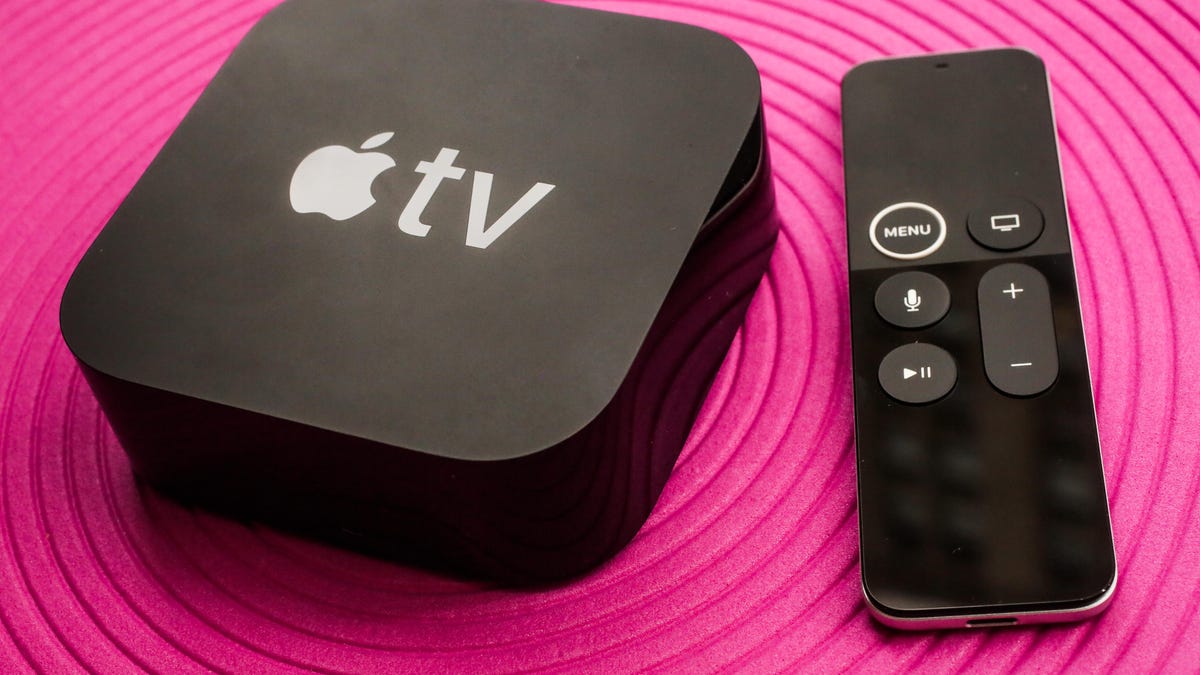Apple TV 4K no longer forces you to watch everything in HDR
Video purists rejoice: Apple's expensive 4K streamer provides the option to turn off automatic HDR conversion. We go hands-on.

Apple TV.
When I reviewed the excellent Apple TV 4K, I had two major complaints: the price and the fact that it forced users to watch everything in high dynamic range.
Apple didn't lower the price (yet), but a free software update available today addresses my second concern. Now there's a setting that lets people who care -- video nerds like me, basically -- choose between always-on HDR and only-on-when-it-should-be HDR.
High dynamic range delivers the best video quality available today, and the Apple TV 4K is currently the only streamer to include both standard HDR10 and Dolby Vision capability. But it's also the only streamer that, by default, plays back everything in HDR. And I mean everything: the main menus, the app menus, the screensavers, the games and yes, all of the video from every app (including ads), regardless of its original format.
Apple's reps said the main reason for this approach is a cleaner user experience: fewer blank screens or other interruptions while the TV adjusts to a different signal.
That's generally true, but the side effects of converting everything to HDR aren't worth it in my book. In my original review I complained about confusing "Dolby Vision" and "HDR" popups on many TVs , an overly-bright image, especially in menus, and the fact that some HDR-ified content looked worse. "Watching 'The Walking Dead,' 'Breaking Bad' and 'Lost' on Netflix , for example, I noticed more roiling motes of noise in skies, smoke clouds and other areas," I wrote at the time.
Match Content.
The software update, TVOS version 11.2, adds a setting called Match Content. It's off by default, but when you switch it on, it essentially does what it all of the competing HDR-capable streamers have done before it: pass along the original video signal without converting it to HDR. In my book, that's a good thing.
Here's what I learned in a couple hours playing with the updated box.
- To enable the new setting, go to Settings>Video and Audio>Match Content and turn both Match Dynamic Range and Match Frame Rate to On.
- With all of the TVs I tested, Match Content worked as expected: stuff in HDR was in HDR, and stuff that wasn't -- like everything from Hulu, HBO Now, and Watch ESPN, for example -- wasn't in HDR.
- The one exception was the Samsung MU9000. With Match Content enabled, Apple TV 4K wouldn't deliver the HDR to it, even with HDR content like "Stranger Things" on Netflix and "Wonder Woman" on iTunes. To get HDR on that TV, I had to disable the setting. This wasn't an issue on the Samsung Q7 or the Sony X900E, both of which worked as expected.
- By default the menus, whether within Apple TV or individual apps, are all still in HDR. And they can still be too bright, especially on TVs with very aggressive HDR settings. The difference can be jarring, especially when I jumped in and out of menus often, for example when watching shorter YouTube videos.
- There's a way to fix that too. Go to Settings>Video and Audio>Format and choose "4K SDR." With Match Content engaged, this setting will put the menus, games and other stuff into standard dynamic range (SDR), while continuing to output HDR and/or Dolby Vision video as appropriate. Win/win!
Here's my recommended final settings for the Apple TV 4K's video menu. They'd be the same for an HDR TV without Dolby Vision, except the top line would read "enable HDR."
- Resist the urge to change the top-level "Enable HDR" or "Enable Dolby Vision" setting. Doing so will revert the menus, games etc back to HDR. To be clear, you don't need to enable those settings to get Dolby Vision or HDR video, as long as Match Dynamic Range is enabled.
- There's is an extra delay, typically a blank screen, as the signal goes from HDR to non-HDR, but it's just three to five seconds on the TVs I tested. That's noticeable, but short and infrequent enough, especially with the settings above, to be worth it in my book.
- With Match Frame Rate films in 24p are presented natively, as they should be, not converted to 60Hz like on many other streamers. The one exception is Nvidia Shield, which also supports 24p output.
- Like other 4K streamers, the Apple TV 4K still converts everything to 4K resolution.
If you're a video purist annoyed by Apple TV 4K's conversion, especially if you own a TV that looks a lot better with Dolby Vision than with HDR10, the new setting could let you finally justify buying an Apple TV.
Beyond Match Content, another item that helps Apple TV catch up to its competition is due by the end of the year: an Amazon Video app. I'll update my full Apple TV review when I get a chance to test it.
Updated December 5 with further testing and the "4K SDR" setting. Big thanks to reader Michel Lleonart for pointing out the effects of that setting.

